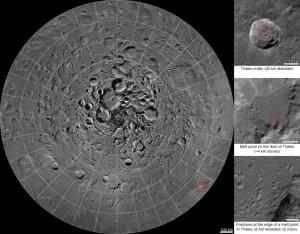Science
World's first flexible multi-functional timer to be distributed at Printed Electronics Europe
Led by IDTechEx, partners included consumer goods company Procter & Gamble, printed logic company PragmatIC, printed battery supplier Blue Spark Technologies, conductive ink and photonic curing equipment supplier NovaCentrix and Cal Poly, who designed and printed on the paper substrate.
- Read more
- 452 reads
NASA's Spitzer Telescope Brings 360-Degree View of Galaxy to Our Fingertips

When you look up at the Milky Way on a clear, dark night, you'll see a band of bright stars arching overhead. This is the plane of our flat spiral galaxy, within which our solar system lies.
- Read more
- 397 reads
Spintronic Thermoelectric Power Generators: A step towards energy efficient electronic devices

Schematic of the spintronic thermoelectric device fabricated by the University of Utah’s researchers. This device can convert even minute heat emitted by hand-held electronic devices such as laptops, etc. into useful electricity.
- Read more
- 345 reads
A mathematical equation that explains the behavior of nanofoams

- Read more
- 343 reads
Space Sunflower May Help Snap Pictures of Planets

This animation shows the prototype starshade, a giant structure designed to block the glare of stars so that future space telescopes can take pictures of planets.
- Read more
- 351 reads
Amazon Inhales More Carbon than It Emits, NASA Finds

Old-growth Amazon tree canopy in Tapajós National Forest, Brazil. A new NASA study shows that the living trees in the undisturbed Amazon forest draw more carbon dioxide from the air than the forest's dead trees emit.
- Read more
- 338 reads
NASA Releases First Interactive Mosaic of Lunar North Pole

A new interactive mosaic from NASA's Lunar Reconnaissance Orbiter covers the north pole of the moon from 60 to 90 degrees north latitude at a resolution of 6-1/2 feet (2 meters) per pixel. Close-ups of Thales crater (right side) zoom in to reveal increasing levels of detail.
- Read more
- 338 reads
NASA Orbiter Finds New Gully Channel on Mars

This pair of before (left) and after (right) images from the High Resolution Imaging Science Experiment (HiRISE) camera on NASA's Mars Reconnaissance Orbiter documents formation of a new channel on a Martian slope between 2010 and 2013, likely resulting from activity of carbon-dioxide frost.
- Read more
- 362 reads
NASA Historic Earth Images Still Hold Research Value

This Seasat synthetic aperture radar image from Aug. 27, 1978, shows the Massachusetts coast from Nantucket Island in the south past Cape Cod and Boston to Cape Ann in the north.
- Read more
- 391 reads
Bright Future for Protein Nanoprobes: Berkeley Lab Researchers Discover New Rules for Single-Particle Imaging with Light-Emitting Nanocrystals

Researchers at Berkeley Lab’s Molecular Foundry created upconverting nanoparticles (UCNPs) from nanocrystals of sodium yttrium fluoride (NaYF4) doped with ytterbium and erbium that can be safely used to image single proteins in a cell without disrupting the protein’s activity.
- Read more
- 311 reads
Human Rights
Fostering a More Humane World: The 28th Eurasian Economic Summi

Conscience, Hope, and Action: Keys to Global Peace and Sustainability

Ringing FOWPAL’s Peace Bell for the World:Nobel Peace Prize Laureates’ Visions and Actions

Protecting the World’s Cultural Diversity for a Sustainable Future

Puppet Show I International Friendship Day 2020

